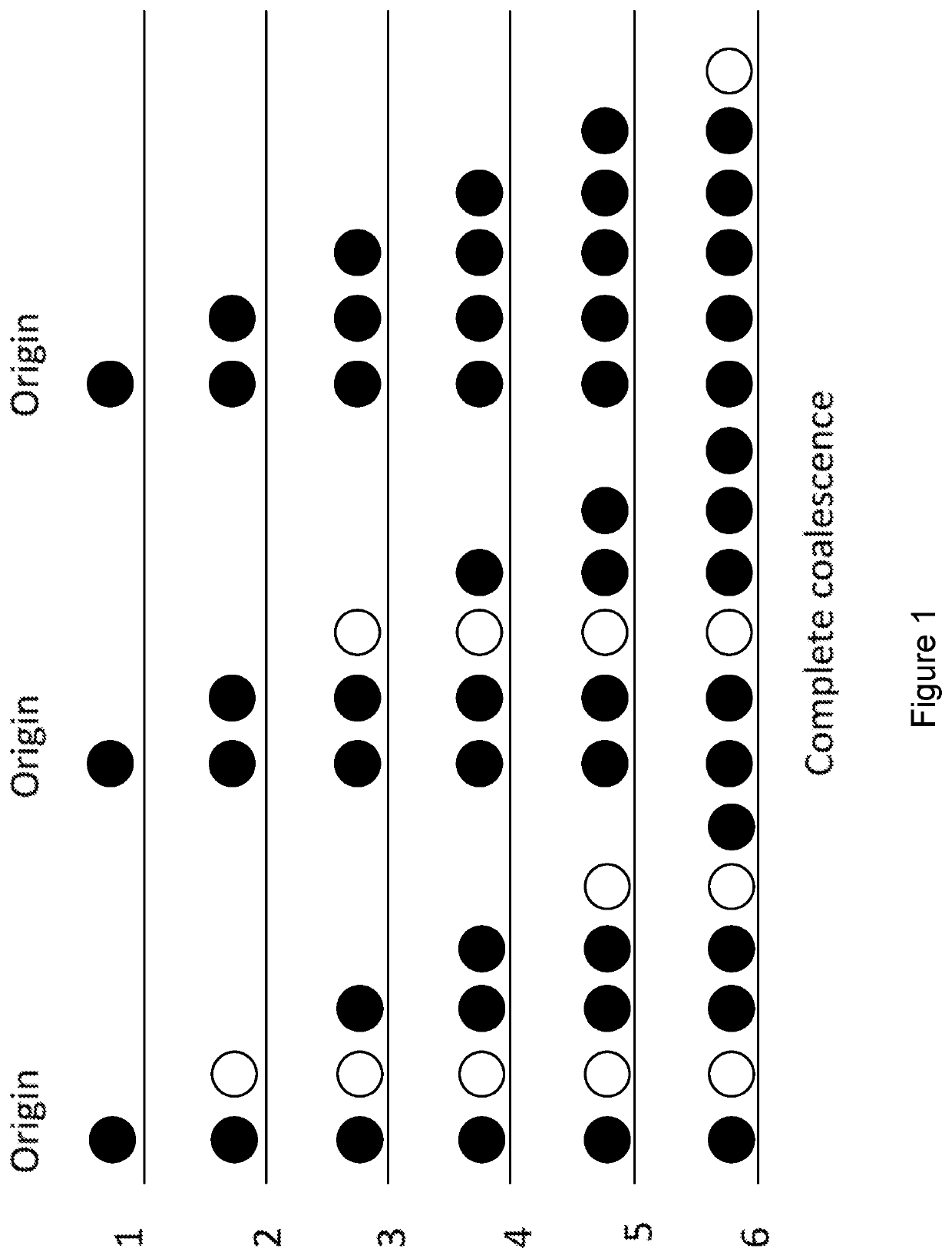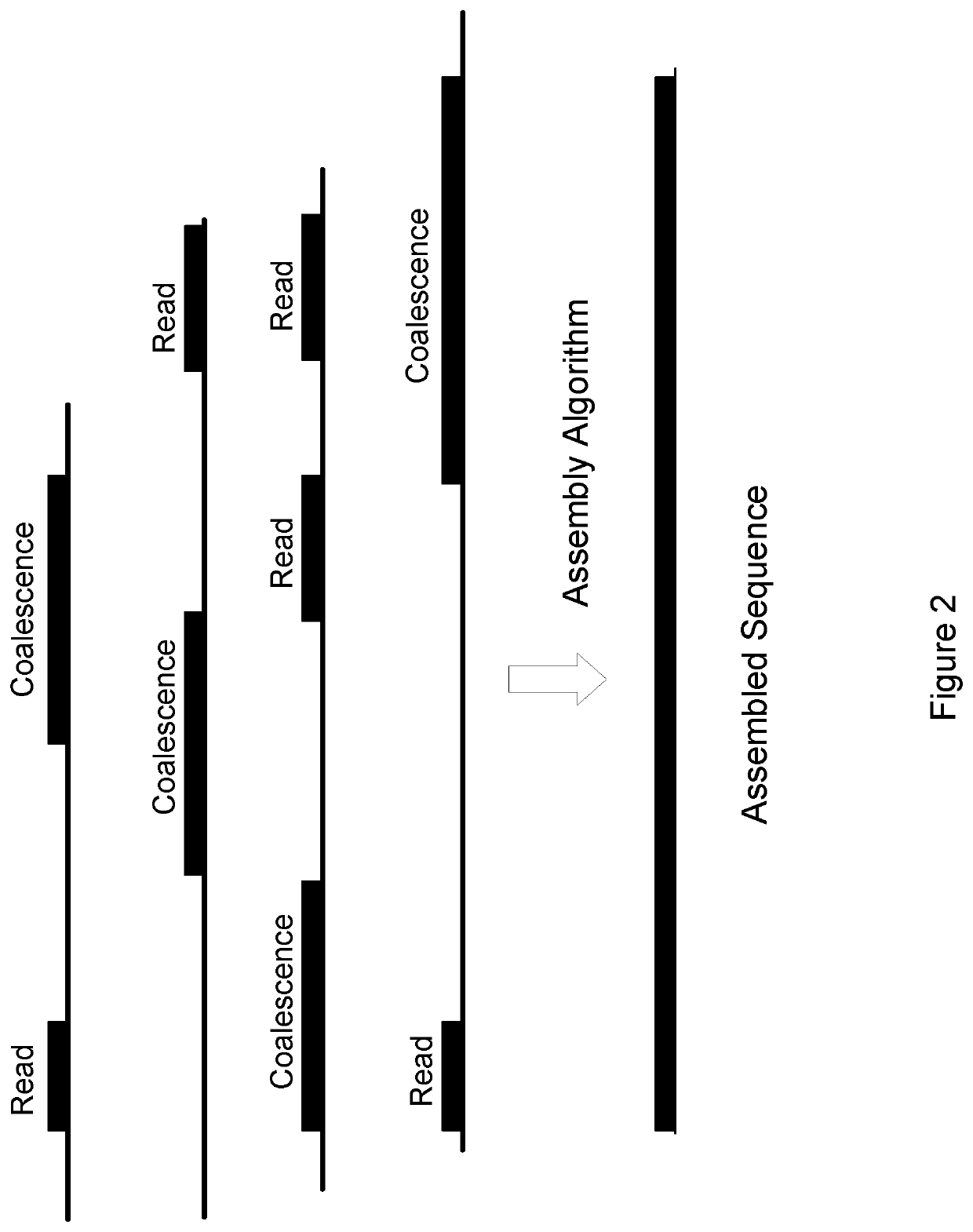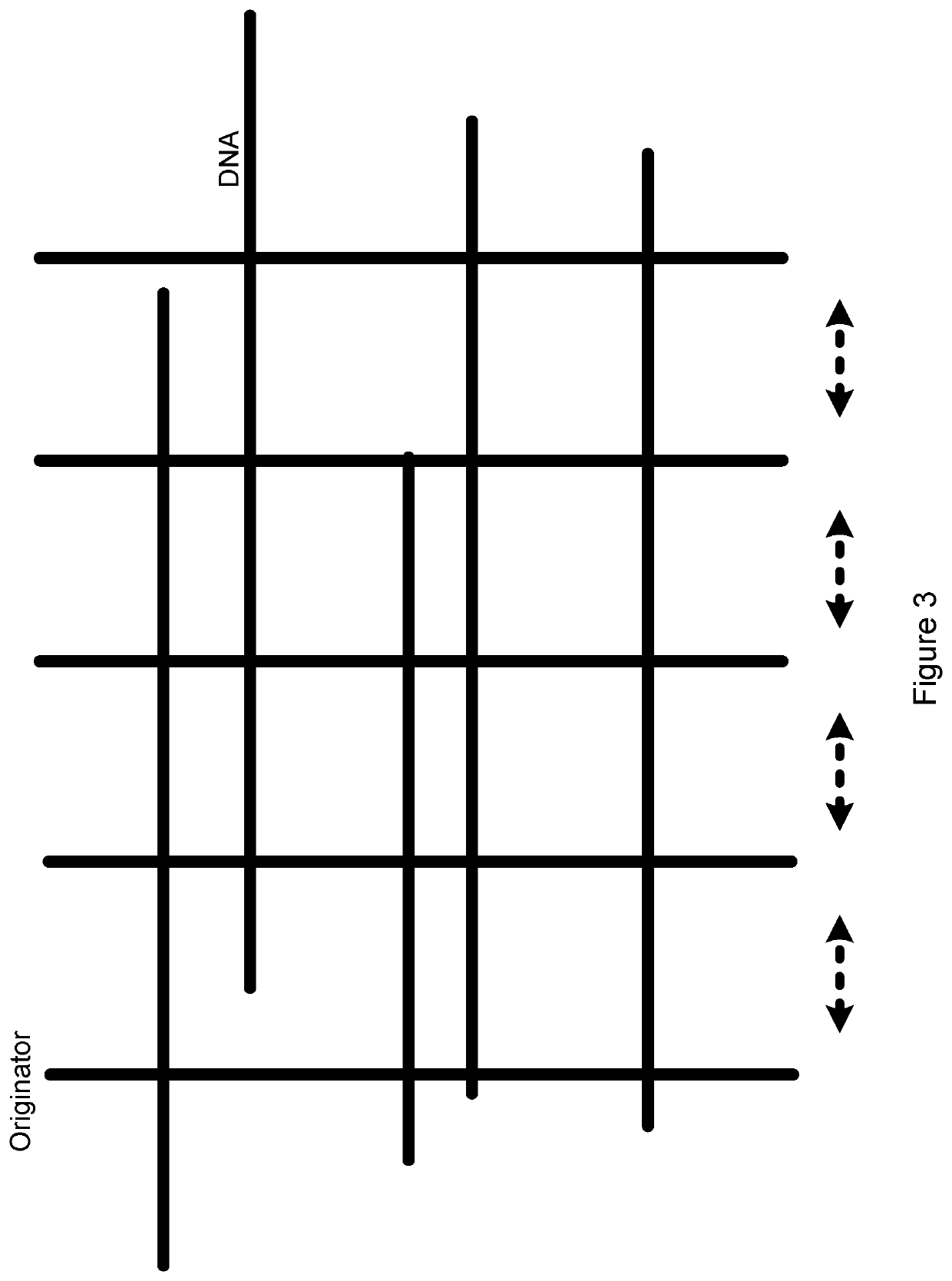Sequencing by coalescence
- Summary
- Abstract
- Description
- Claims
- Application Information
AI Technical Summary
Benefits of technology
Problems solved by technology
Method used
Image
Examples
example 1
g a Double Stranded Polynucleotide (e.g. Genomic DNA)
[0617]Step 1—Extracting Long Lengths of Genomic DNA
[0618]NA12878 cells are grown in culture and harvested. They are mixed with low-melting temperature agarose heated to 60° C. The mixture is poured into a gel mould (e.g. purchased from Bio-Rad) and is allowed to set into a gel plug, to give approximately 4×107 cells (this number can be higher or lower depending on the desired density. The cells in the gel plug are lysed by bathing the plug in a solution containing Proteinase K. The gel plugs are gently washed in TE buffer (e.g. in a 15 ml falcon tube filled with wash buffer but leaving a small bubble to aid in the mixing, and placing on a tube rotator). The plug is placed in a trough with around 1.6 ml volume and DNA is extracted by using agarase enzyme to digest the DNA. The FiberPrep kit (Genomic Vision, France) and associated protocols can be used to carry out this step.
[0619]Step 2—Stretching Molecules on a Surface
[0620]The fi...
example 2
Oligos Annealed on Single Stranded Polynucleotides
[0642]In one embodiment an RNA polynucleotide or denatured DNA polynucleotide is sequenced. Steps 1, 2, 3 and are 4 common with example 1 above, but instead of step 5 (nicking) denaturation is done instead and oligos are added:
[0643]Step 5—Denaturation of dsDNA
[0644]ds DNA was denatured by flushing alkali (0.5M NaOH) through the flow cell and incubating for approximately 20 minutes at room temperature. This is followed by PBS-washes. (Alternatively, incubation with 1M HCL for 1 hour followed by water washes and a 5 minute TE wash can be done).
[0645]Step 6—Adding Oligos
[0646]The flow cell is pre-conditioned with hybridization buffer (2×SSC, 50% Formamide, 33% Blockaid, 0.1% SDS or 3M TMACL, 50 mM Tris Cl ph8, 0.4% BME, 0.05% Tween 20).
[0647]800 nM oligos are bound to the elongated denatured polynucleotides. The length of the oligo primer can range from typically range from 10 to 30 nucleotides and the reaction temperature depends on t...
example 3
on Labelling on Single Stranded Polynucleotide
[0655]Steps 1, 2, 3 and are 4 common with example 1 and step 5 is common with example 2. Step 11 is common with example 1 but epi-mark information is processed rather than sequencing information.
[0656]Step 6—Binding of Anti-Methyl C Antibody.
[0657]The flow cell is flushed with PBS-washes and the anti-methyl antibody 3D3 clone (Diagenode) in Phosphate Buffered Saline is added and incubated for one hour. Optionally the proteins or antibodies can be fixed to the DNA using 2% Formaldehyde (Thermofisher).
[0658]Step 7—Imaging-Determining the Location of Epi-Marks
[0659]The flow channel is placed on an inverted microscope (e.g. Nikon Ti-E) equipped with Perfect Focus, TIRF attachment, and TIRF Objective, lasers and a Hamamatsu or Andor EMCCD camera. Imaging buffer is added (which can be supplemented or replaced by a buffer containing Beta-Mercaptoethanol, Enzymatic redox system, and / or Ascorbate and Gallic Acid). Fluorophores are detected along ...
PUM
| Property | Measurement | Unit |
|---|---|---|
| Length | aaaaa | aaaaa |
| Fraction | aaaaa | aaaaa |
| Biodegradability | aaaaa | aaaaa |
Abstract
Description
Claims
Application Information
 Login to View More
Login to View More - R&D
- Intellectual Property
- Life Sciences
- Materials
- Tech Scout
- Unparalleled Data Quality
- Higher Quality Content
- 60% Fewer Hallucinations
Browse by: Latest US Patents, China's latest patents, Technical Efficacy Thesaurus, Application Domain, Technology Topic, Popular Technical Reports.
© 2025 PatSnap. All rights reserved.Legal|Privacy policy|Modern Slavery Act Transparency Statement|Sitemap|About US| Contact US: help@patsnap.com



